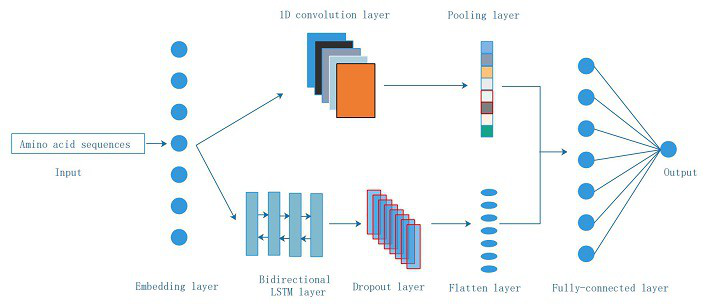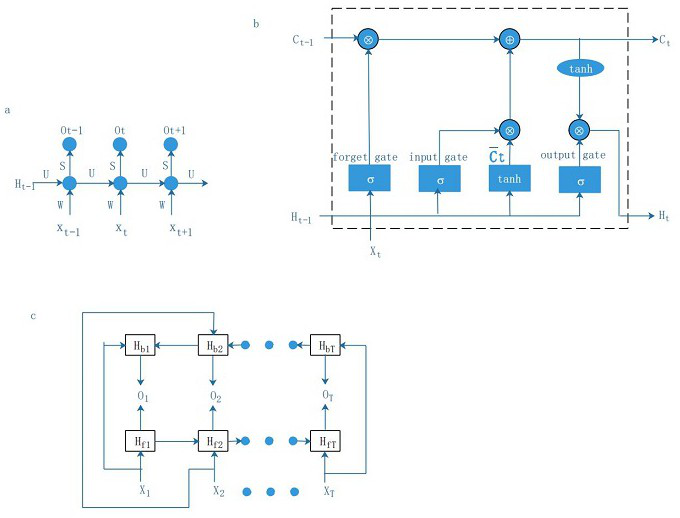Lysine succinylation modification prediction method based on bidirectional long-short term memory and convolutional neural network
A convolutional neural network, lysine succinyl technology, applied in the field of computational biomolecules, can solve problems such as information loss, and achieve the effect of fast and effective prediction
- Summary
- Abstract
- Description
- Claims
- Application Information
AI Technical Summary
Problems solved by technology
Method used
Image
Examples
Embodiment Construction
[0017] The present invention will be further described below in conjunction with the accompanying drawings and specific embodiments.
[0018] Step 1: 6377 succinylated proteins containing 18593 succinylated sites were downloaded from the PLDM database.
[0019] The second step: 6377 protein sequences were clustered with the software CD-Hit, and the cut-off value of sequence identification was set at 0.4. A total of 3560 protein sequences were obtained, and the similarity between any two sequences was less than 0.4.
[0020] Step 3: 3560 proteins are randomly divided into training samples and test samples according to the ratio of 4:1.
[0021] Step 4: For each protein sequence, the sequence is divided into peptides with lysine as the center and 15 amino acid residues upstream and downstream; for peptides with less than 15 amino acid residues, at the front or end of the peptide Complete with the character "X"; peptides with succinylation sites are regarded as positive samples....
PUM
 Login to View More
Login to View More Abstract
Description
Claims
Application Information
 Login to View More
Login to View More - R&D
- Intellectual Property
- Life Sciences
- Materials
- Tech Scout
- Unparalleled Data Quality
- Higher Quality Content
- 60% Fewer Hallucinations
Browse by: Latest US Patents, China's latest patents, Technical Efficacy Thesaurus, Application Domain, Technology Topic, Popular Technical Reports.
© 2025 PatSnap. All rights reserved.Legal|Privacy policy|Modern Slavery Act Transparency Statement|Sitemap|About US| Contact US: help@patsnap.com



